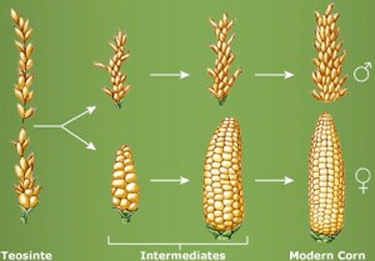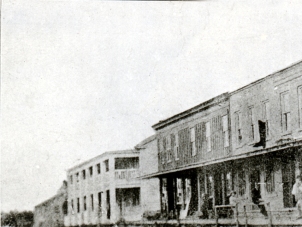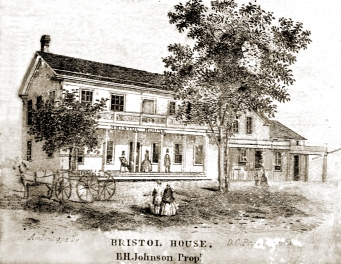It’s difficult in this era of jet airliners and space stations to recall how vital horses once were to the nation’s economy. It’s probably not too strong a statement to say that a fairly large percentage of the nation’s economy was based on horses from the late 19th Century until the second decade of the 20th Century.
Farming, especially, became extremely dependent on horse power, but so did life in America’s cities.

McCormick’s first reaper proved to be popular with farmers. Here in Kendall County, Townsend & Davis manufactured the machines on franchise.
Until the second third of the 19th Century, virtually all farm work was done by hand, but starting in the 1830s, more and more mechanization was introduced as farmers tried to increase production and reduce the labor needed to plant and harvest crops.
Mechanical harvesters were the first complicated pieces of equipment introduced and used on a wide scale on individual farms. Cyrus McCormick’s horsedrawn machine, generally considered the first truly economically successful harvester, was introduced in 1831. It greatly sped up the harvest of small grains—oats, wheat, rye, barley—and sharply reduced the backbreaking labor of cutting ripe grain. Before the harvester’s invention, farmers had to cut grain by hand, using a large hand-held scythe fitted with a set of wooden fingers called a cradle. As the scythe was swung through standing stalks of grain, the blade cut the stalks, which were then caught by the fingers of the cradle. The farmer then laid them in a row on the ground as he moved ahead to cut the next batch of stalks.
The first harvester automatically cut the grain and laid it on a surface where a farmer walking beside the machine could rake it into a row, where it could then be bound into bundles, which were stacked into shocks to dry before the kernels of grain were threshed from the stalks. Improvements continued steadily until machines in the later 19th Century not only cut grain, but also automatically bound it into bundles.
All this progress required additional horses to pull first the harvesters and then the harvester-binders.

Sweep-type horse-powers changed vertical shaft motion into horizontal motion to power a variety of machines. The unguarded shafts, however, were extremely dangerous, and many an unwary farmer lost a hand, arm, foot, or leg when clothing became ensnared.
When mechanical threshing machines–also called separators because they separated grain from stalks–were introduced, they, too, were powered by horses using a mechanism called a horse-power. Horse-powers came in all sorts of sizes and designs to provide power for everything from threshing grain to washing clothes to running newspaper printing presses.
Each time a new use was discovered, it meant more horses were required, in urban as well as in rural areas. City horsedrawn streetcars, dray wagons, peddler wagons, private buggies and carriages all required horses. All those urban horses required food that couldn’t be grown on city lots, so areas like Kendall County, located fairly close to large cities like Chicago, saw their mix of crops lean heavier towards those good for horse feed and fodder, especially oats and hay crops.

Incline horse-powers were more compact and so suitable for use in town. The Kendall County Record used one to power its printing press until they changed over to steam power in the 1890s.
Here in northern Illinois, horses were valued both for the work they could perform and for their use as motive power for buggies and winter sleighs, as well as for riding, not to mention for entertainment—by the 1870s, harness racing was a national craze.
And with all that popularity naturally came a fair amount of larceny. Horse thievery was a big problem, even here in rural Kendall County, especially in the 1870s.
Under the headline “Horse Thieves Again: Shall We have some Judicious Lynching?” the Kendall County Record ran a story on Oct. 28, 1875 reporting:
“Tuesday night, a pair of horses were stolen from the stable of N.B. Young, Bristol; the same gentleman who had a wagon stolen at the time Mr. Patterson’s horses were taken. They were good farm horses only six years old. The thieves also took a farm wagon and set of double harness. The barn door was locked but the rascals wrenched the lock off. Mr. Young tracked the thieves as far as the Oswego bridge, which they crossed and there the trail was lost. Mr. Y. being a member of the Protective Association has notified its officers of the lost property. There are many scoundrels engaged in this business; some of them near home; and a little harsh treatment might do them good.”
By 1870, the U.S. Census Bureau reported the number of horses in Kendall County stood at 7,275. That year, the county’s total population was reported as 12,400 meaning there was one horse in the county for every 1.7 people.
And as noted above, it wasn’t just thieves, farmers, and teamsters interested in good horseflesh in those days, either. According to the Record, reporting from Oswego on Aug. 1, 1872:
“The stock of extra fine horses in this town is now quite large, and our horsemen, of which Paul Hawley, Ed Mann and Hank Hopkins are the principal ones, are daily at training them to fast and square trotting on the half mile course in Hawley’s pasture, which is now in an excellent condition.”
While breeders and racers were an important segment of the horse-using population, farmers were making use of most of the county’s horses. Economical horse-power mechanisms were beginning to spread fairly widely. According to the Record on Sept. 30, 1875:
“Our threshing machines all seem to be doing a good business this season, and are making money for their owners. Last week with his new Case machine, Thos. Spencer thrashed 275 bags of oats in 3 hours and 30 minutes on the Helme farm for Mr. Garlick, and the horses on the power never stopped once during the time. This was 825 bushels of oats by weight.”

In 1910, Oswego saloon keeper Johann Schmidt had his hired man hold his prized driving horse while he snapped a photo to send to his family back in Denmark. (Little White School Museum collection)
Good horseflesh was also demanded for other uses. On Jan. 8, 1874, the Record reported that: “Paul Hawley of Oswego recently sold a pair of horses that weigh 2,600 pounds to the Aurora Fire Department for $400.” According to my handy inflation calculator, that would be a little over $8,000 in 2016 dollars.
But reading the newspapers from that era, it’s the constant threat of horse thieves that dominated the country newspaper’s news columns. The Kendall County Horse Protective Association was formed in the 1850s to combat the plague of horse stealing, but without a whole lot of success, if those newspaper accounts are taken into account. Sometimes it was even left to kids to combat the bad guys. On April 10, 1879, the Record’s Oswego correspondent recounted one youngster’s hair-raising confrontation:
“Thursday evening while George Parker was over in town to witness the canvass of the vote, his son, Willie, about 12 years old, stepped out doors and heard something about the barn; thinking it was his brother he called to him, but receiving no answer he went back in the house got a navy revolver and with it started to the barn and found a fellow just in the act of leading off their best span of horses, but abandoned them when he saw the boy coming; Willie shot at the thief and followed him up, but another one who apparently had been on top of a hay stack put in an appearance and snapped a pistol at Willie close by; Willie then retreated and before he could get reinforcement the fellows had cleared out and no further trace of them could be found.”

In 1903, George Collins (right rear tipping his hat) traveled to England to bring home blooded stock to his Oswego Township farm. (Little White School Museum collection)
As more and more uses were found for them, horses continued to increase in numbers across the nation and here in Kendall County. By 1910, the county’s horse population had reached its all-time high, 10,421 animals, at a time when its total population stood at just 10,777. In those years, Kendall County was known throughout the state for the quality of its horses, with area farmers such as George Collins traveling to England and other countries to buy prize breeding stock.
But from 1910 on, the introduction of automobiles and other transportation options, plus increasing mechanization of farming powered by steam and internal combustion engines meant the number of horses was on the decline. By 1940, just as the nation was destined to enter World War II, there were only 3,300 horses on Kendall County farms, and by 1945 as the war ended, the number of farmers’ horses had declined by almost half to about 1,900.
Today, horses are an expensive hobby with ownership limited to pleasure riders, professional race horse breeders and owners, polo pony riders and breeders, and other such folks. You seldom see a horse on a working grain farm unless the farmer, his wife, or kids are 4-H’ers or hobbyists. But the time was, horses were ubiquitous in towns and on farms all over the country, vital components of the rural and urban economy.












